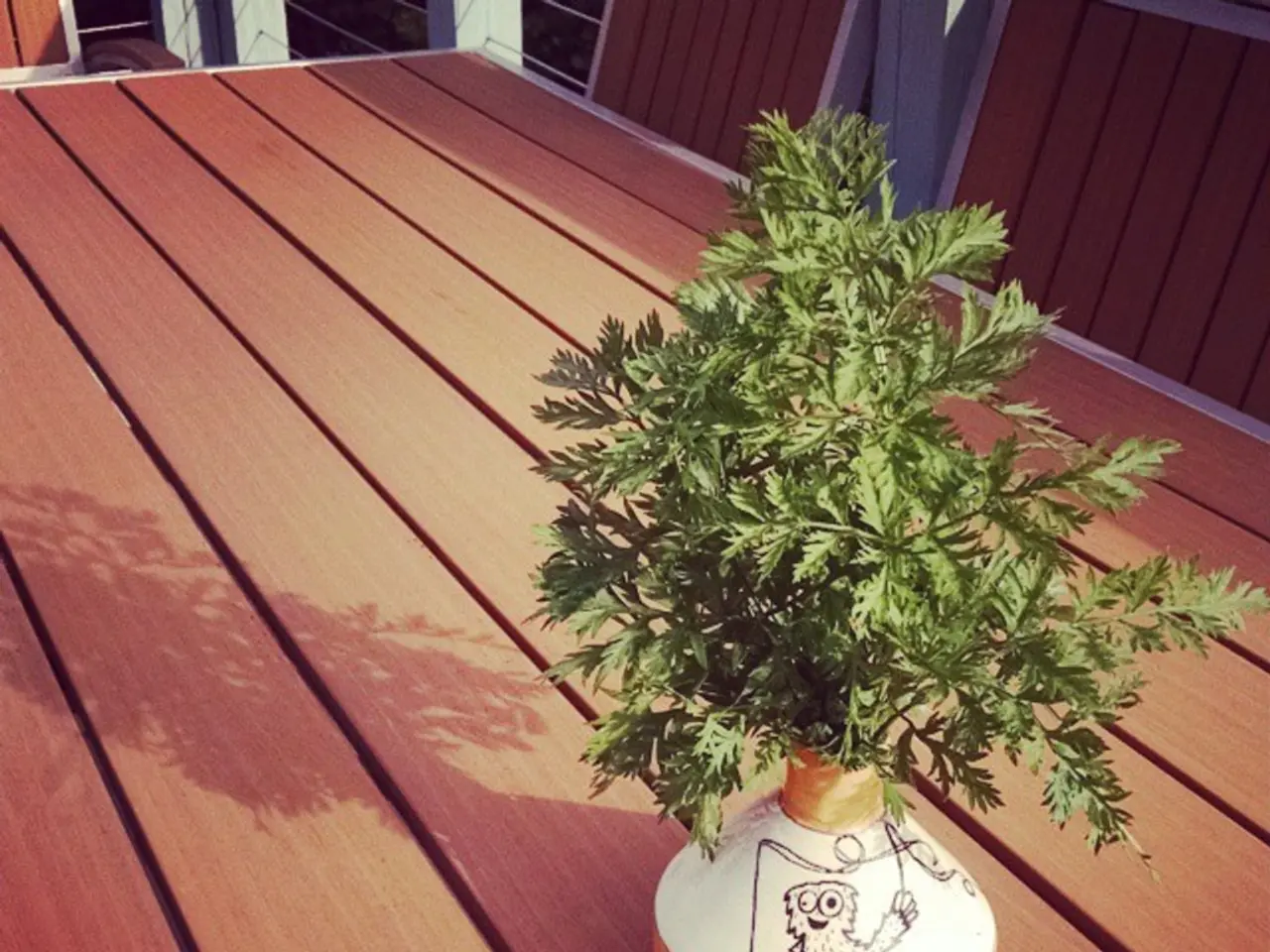Strategies for Mold Prevention in House Plants' Soil: Insights and Ideas
Mould can be a common issue for indoor plants, but with a few simple steps, you can keep your plants healthy and mould-free.
Firstly, ensure your plant pot has drainage holes to allow excess water to escape. This is crucial in preventing waterlogging, which encourages mould growth.
Secondly, the right soil can make a big difference. Ingredients such as biochar, compost, coarse sand, twigs, wood chips, pine bark, pumice, vermiculite, perlite, or coco coir can help improve drainage and aeration while providing essential nutrients for your plants. Using a well-draining potting mix containing materials like perlite or sand is crucial for preventing mould.
To effectively reduce and prevent mould growth in houseplant soil, manage moisture carefully. Water only when the top 1 to 2 inches of soil are dry. Overwatering causes excess moisture, which encourages mould growth. Practice bottom watering, where you pour water into the saucer and let the plant draw moisture up. This helps avoid overwatering and keeps the surface soil drier, reducing mould and pests like fungus gnats.
Maintain good air circulation and light around plants; spacing them apart prevents humid, stagnant air that fosters mould. For existing mould, treat soil and affected leaves with diluted hydrogen peroxide (3 parts water to 1 part 3% solution). This disinfects, oxygenates the soil, and combats fungal infections safely.
If you are storing potting soil, let it dry before storage or use treatments like solarization (heating soil under clear plastic in sunlight) to kill spores. However, this can also eliminate beneficial microbes, so soil rejuvenation afterward is advisable.
If disposing of dead plant material, it is generally okay to put it directly in the trash or compost bin, but if the plant has died due to a pest infestation, take extra measures to ensure the pests do not spread to your other plants.
If your plant requires moist soil, wait until just the top layer or surface is dry before watering again. During the plant's dormant period, allow the soil to dry out more than usual. Overwatering can encourage mould growth, particularly during colder temperatures when soil is slower to dry out.
If reusing soil from a dead plant, sterilise it first by removing dead plant material, debris, and pests, then sealing it in a container and leaving it in the sun for a few weeks or baking it in the oven at 180°F-200°F (82.2-93.3°C) for 30 minutes.
Consider investing in a moisture meter to measure the moisture content of the soil. If your plant is in a smaller pot, water more frequently as smaller pots tend to dry out faster. Look for potting mixes with increased soil porosity, a loose soil structure, and a light and fluffy consistency.
If you must use ericaceous soil, it is recommended to amend it with lime to raise the pH to a suitable level for rose growth. Do not stick to a strict watering schedule, instead test the dryness of the soil with your finger before watering. Test soil moisture levels by pushing your finger into the soil, watering when the top few inches are dry.
It is important to use a soil with a pH between 6.0 and 6.8 for roses to ensure proper nutrient absorption. Use a soil that fits your plant's needs, such as potting mixes for houseplants due to their light texture and high drainage. Ericaceous soil is not recommended for planting roses, as it has a low pH and can lead to nutrient deficiencies in roses.
Group plants with similar water needs together to avoid overwatering some while underwatering others. Some examples of well-draining potting mixes suitable for various indoor plants include FoxFarm Ocean Forest Potting Soil, Harris Premium Succulent and Cactus Potting Soil Mix, Miracle-Gro Houseplant Potting Mix, Craft Aroid Potting Mix, and Premium Monstera Potting Soil.
During active growth, allow the soil to dry out about halfway down the pot before watering again. If your plant is in bloom, it will likely require more water, so you can let about a quarter of the soil volume dry out before watering again. Dead plant material can cause mould issues, so it is important to remove dead plant material from the soil's surface to prevent mould growth.
By following these tips, you can keep your houseplants healthy and mould-free, ensuring they thrive in your home.
Read also:
- Education Exhibition: August 2024 Display and Demonstration
- Enhanced solar power for 600-watt power stations: the BOOSTER unit offers an upgrade.
- Revolutionizing healthcare through Remote Patient Monitoring Systems: A life-changing approach!
- What's the Ideal Lighting for Your Coral Culture in the Aquarium?




